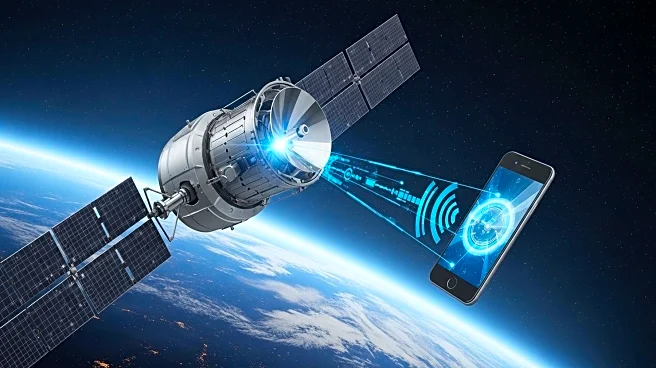What's Happening?
China has introduced new guidelines and licensing to promote direct-to-device satellite services, marking a strategic move into the competitive satellite internet sector. The Ministry of Industry and Information Technology (MIIT) issued 'Guiding Opinions on Optimizing Business Access to Promote the Development of the Satellite Communications Industry' in late August. These guidelines support direct satellite connections for mobile phones and other devices, encourage partnerships between telecommunications and satellite firms, and outline a 'no SIM swap, no number change' model. The initiative aims for large-scale application by 2030, targeting over 10 million satellite communication users. On September 9, MIIT granted China Unicom a license to operate satellite mobile services, enabling direct-to-phone satellite connectivity. This development aligns with China's broader satellite internet strategy, including the construction of the Guowang low Earth orbit megaconstellation and the Qianfan constellation.
Why It's Important?
The guidelines represent a significant step in China's efforts to enhance its satellite internet capabilities, potentially reshaping the global satellite communications landscape. By promoting direct-to-device services, China aims to integrate space and ground information infrastructure, which could lead to increased competition with international players like SpaceX and European initiatives. The move could benefit Chinese telecommunications firms by expanding market access and fostering innovation in satellite communication technologies. However, it may also pose challenges to U.S. companies operating in the satellite internet sector, as China seeks to establish itself as a major player in this field.
What's Next?
China plans to pool industry resources to build an open, shared, and integrated satellite communications standards system. The country will actively participate in international standards organizations, such as the International Telecommunication Union (ITU) and the Third Generation Partnership Project (3GPP). These efforts may lead to further regulatory developments and international collaborations, potentially influencing global satellite communication standards. As China continues to expand its satellite internet infrastructure, other countries and companies may respond by accelerating their own satellite service initiatives to maintain competitiveness.
Beyond the Headlines
The push for direct-to-device satellite services reflects China's broader ambitions in space technology and telecommunications. This initiative could have long-term implications for global internet access, particularly in remote and underserved areas. By advancing satellite communication technologies, China may contribute to bridging the digital divide, offering new opportunities for economic development and connectivity. Additionally, the integration of space and ground infrastructure may lead to advancements in IoT services, enhancing various industries such as agriculture, transportation, and healthcare.











